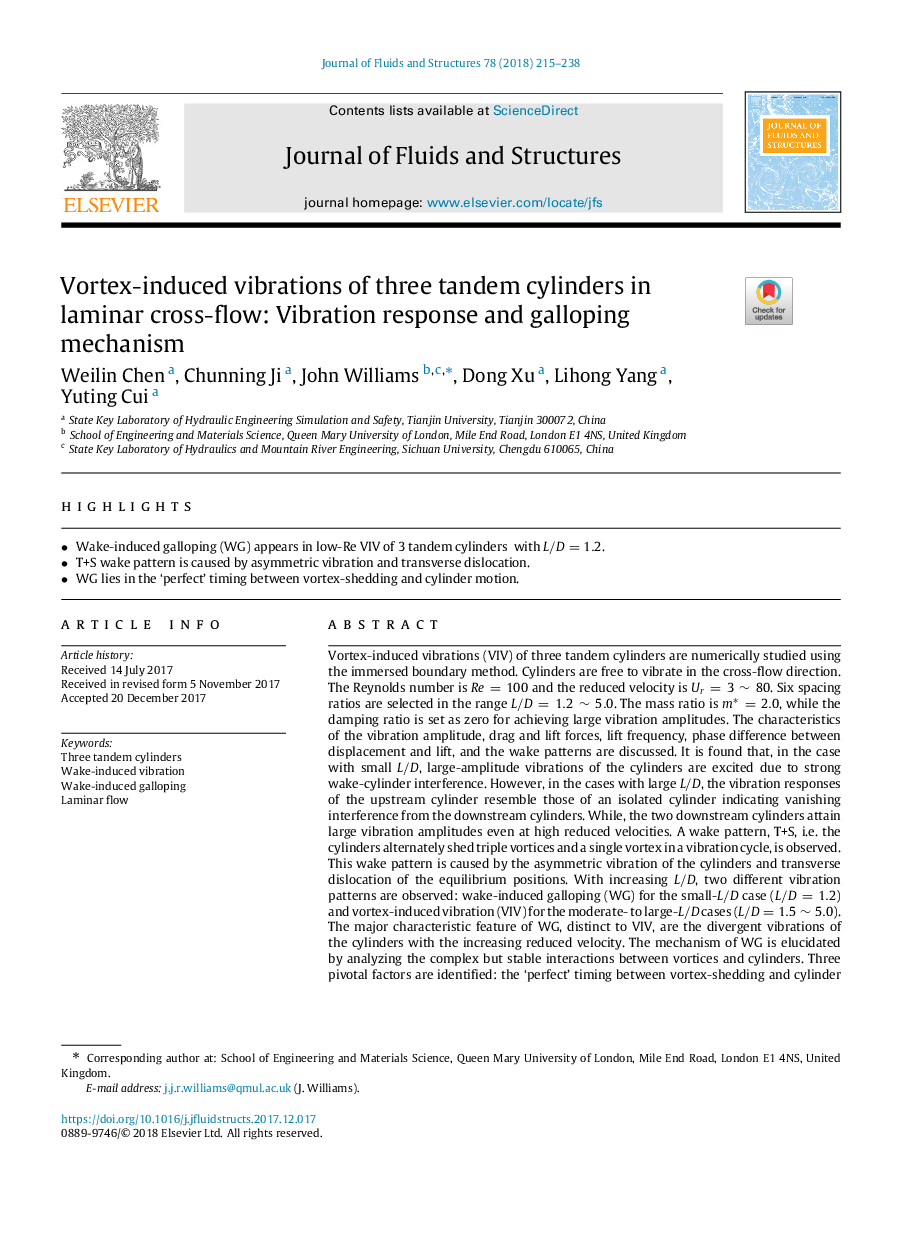| کد مقاله | کد نشریه | سال انتشار | مقاله انگلیسی | نسخه تمام متن |
|---|---|---|---|---|
| 7175802 | 1466569 | 2018 | 24 صفحه PDF | دانلود رایگان |
عنوان انگلیسی مقاله ISI
Vortex-induced vibrations of three tandem cylinders in laminar cross-flow: Vibration response and galloping mechanism
دانلود مقاله + سفارش ترجمه
دانلود مقاله ISI انگلیسی
رایگان برای ایرانیان
موضوعات مرتبط
مهندسی و علوم پایه
سایر رشته های مهندسی
مهندسی مکانیک
پیش نمایش صفحه اول مقاله

چکیده انگلیسی
Vortex-induced vibrations (VIV) of three tandem cylinders are numerically studied using the immersed boundary method. Cylinders are free to vibrate in the cross-flow direction. The Reynolds number is Re=100 and the reduced velocity is Ur=3â¼80. Six spacing ratios are selected in the range LâD=1.2â¼5.0. The mass ratio is mâ=2.0, while the damping ratio is set as zero for achieving large vibration amplitudes. The characteristics of the vibration amplitude, drag and lift forces, lift frequency, phase difference between displacement and lift, and the wake patterns are discussed. It is found that, in the case with small LâD, large-amplitude vibrations of the cylinders are excited due to strong wake-cylinder interference. However, in the cases with large LâD, the vibration responses of the upstream cylinder resemble those of an isolated cylinder indicating vanishing interference from the downstream cylinders. While, the two downstream cylinders attain large vibration amplitudes even at high reduced velocities. A wake pattern, T+S, i.e. the cylinders alternately shed triple vortices and a single vortex in a vibration cycle, is observed. This wake pattern is caused by the asymmetric vibration of the cylinders and transverse dislocation of the equilibrium positions. With increasing LâD, two different vibration patterns are observed: wake-induced galloping (WG) for the small-LâD case (LâD=1.2) and vortex-induced vibration (VIV) for the moderate- to large-LâD cases (LâD=1.5â¼5.0). The major characteristic feature of WG, distinct to VIV, are the divergent vibrations of the cylinders with the increasing reduced velocity. The mechanism of WG is elucidated by analyzing the complex but stable interactions between vortices and cylinders. Three pivotal factors are identified: the 'perfect' timing between vortex-shedding and cylinder motion, the transverse dislocation of the equilibrium positions, and the low and decreasing vibration frequency.
ناشر
Database: Elsevier - ScienceDirect (ساینس دایرکت)
Journal: Journal of Fluids and Structures - Volume 78, April 2018, Pages 215-238
Journal: Journal of Fluids and Structures - Volume 78, April 2018, Pages 215-238
نویسندگان
Weilin Chen, Chunning Ji, John Williams, Dong Xu, Lihong Yang, Yuting Cui,